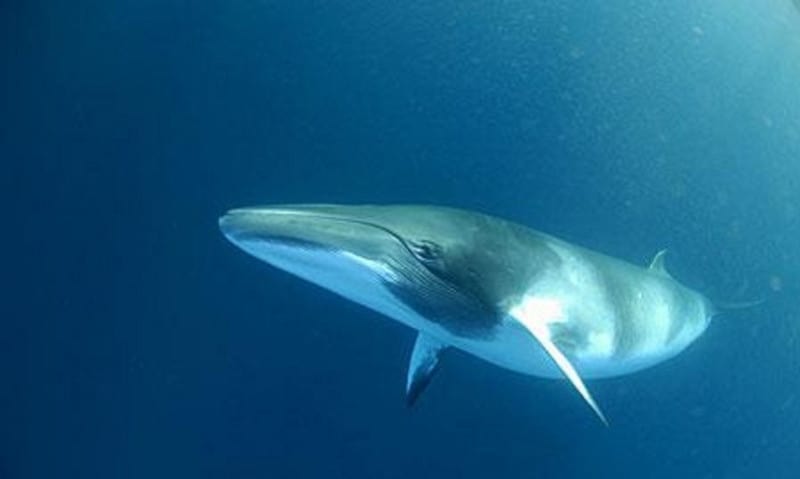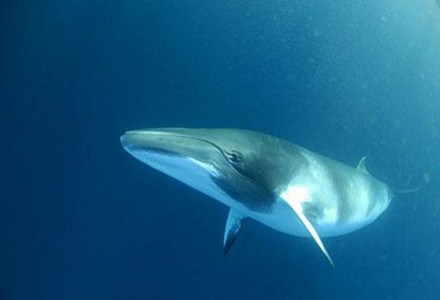
Fin Whale Facts
- This magnificent work of Nature and evolution most frequently goes by the common name of the Fin Whale. It also goes by the alternate name of the common rorqual and the finback whale. Previously it was also known by two other unique terms.
- Those formerly used names consisted of the razorback whale and the herring whale. Scientists, however, know it by yet another term. It’s a much more difficult to pronounce term, however. That’s its technical name of Balaenoptera physalus.
- The first formal acknowledgement of the astounding creature as a separate and distinct species occurred in 1758. That official recognition additionally took place at the hands of the highly esteemed Swedish botanist and zoologist, Carl Linnaeus.
- Regrettably, like many of its brethren, humans once hunted this mammoth of the seas mercilessly. Due to the actions of humans, its population plummeted. Thankfully, though, the International Whaling Commission issued a moratorium on hunting of it.
- Following this action, its numbers slowly rebounded, though its numbers still lag far behind the original. Current estimates now place its global population at between 100,000 and 119,000. The IUCN, therefore, now lists the cetacean as Vulnerable.
- The beautiful Fin Whale still faces many threats to its existence, despite the ban. That’s because of several factors. One of those consists of the fact that Japan and Iceland have resumed hunting. It further faces the ongoing threat posed by climate change.
Related Articles
Fin Whale Physical Description
The breathtaking Fin Whale quite easily impresses the viewer for several undeniable reasons. The first of these, however, has to be its sheer physical size. That’s due to the fact that the whale represents the second-largest of all creatures known to currently exist.
Physical dimensions actually vary between populations in the Northern and Southern Hemispheres. Overall, however, the difference remains relatively minor. Individuals further display a moderate degree of the physiological trait of sexual dimorphism.
In its specific case, this trait manifests in terms of physical size. More precisely, females attain an average body length slightly greater than that of the males. The former average around 66 ft (20 m), while the males only attain lengths averaging about 61 ft (18.5 m).
The body weights of the genders, understandably, also differ. In the Northern Hemisphere, the longer females typically weigh 111,000 lbs (50,349 kg), but the males only average 85,000 lb (38,555 kg). In the Southern Hemisphere, both measurements are slightly greater.
Otherwise, though, the two sexes remain virtually identical in terms of general physical appearance. This visual pattern remains a complex mix, though. The underside appears an off-white in color. The upperside, meanwhile, appears grayish to brownish.
The head of the Fin Whale, though, presents a unique pattern of its own. On the left side, this appears a dark gray. The right side, though, shows a surprisingly complex pattern. This consists of various patches of contrasting light and dark gray and brown shades.
- Kingdom: Animalia
- Phylum: Chordata
- Class: Mammalia
- Order: Artiodactyla
- Family: Balaenopteridae
- Genus: Balaenoptera
- Species: B. physalis
Fin Whale Distribution, Habitat, and Ecology
One factor working in the favor of the awesome Fin Whale continues to be its habitat range. That’s because this species, like most rorquals, has a cosmopolitan distribution. In point of fact, populations appear in virtually all of the major oceans of the globe.
These include regions extending from both the North and South Poles, to all of the tropical regions. The exceptions to this range remain few, in fact. These include the zones near the ice packs at both poles. Others, though, include areas such as the Red Sea.
This wonder of Nature also displays a high degree of versatility in its habitat preferences. That’s clearly demonstrated, however, by its appearance in such wide-ranging climates. It does appear to be more common intemperate and cool waters, though.
Like many of its related species, this cetacean evolved as a filter feeder. It therefore feeds primarily on vast quantities of krill. Its diet does, however, include a smaller percentage of other prey. These include other small crustaceans, fish, and sometimes squid.
It in turn has only one known natural predator, other than mankind, of course. That’s the equally magnificent Orca. To the best knowledge of researchers, however, such attacks occur on a rare basis. When they do, it typically involves several so-called killer whales.
For the amazing Fin Whale, mating usually occurs in the Winter. The females typically give birth every 2-3 years, and to a single calf, though multiples do occur. These sometimes number as many as calves. Finally, mobile groups generally average 6-10 specimens.
Species Sharing Its Range
Spinner Shark Mimic Octopus Hourglass Dolphin
Check out our other articles on Omura Whale, Bowhead Whale, Minke Whale, 9 Truly Magnificent Mantises, Blue Death Feigning Beetle, Giant Girdled Lizard, Hyacinth Macaw

